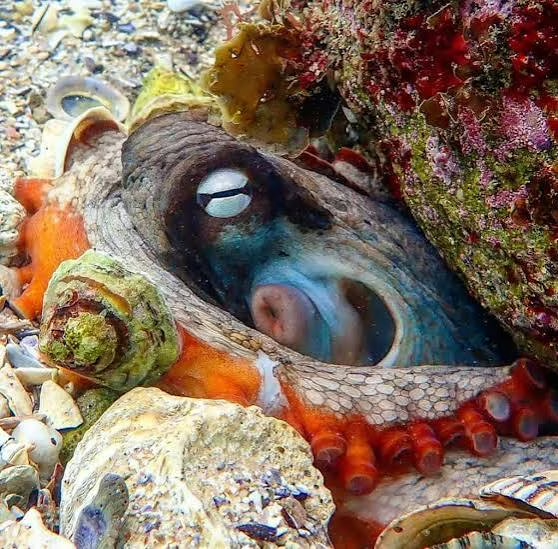
The Finding
Beneath the sapphire skin of an Australian bay, where sunlight fractures into ribbons of silver and emerald, something extraordinary stirs. Between shifting sand and scattered shells, a congregation of beings gathers — each one intelligent, each one solitary by nature, yet here, together, they form something utterly new. They have built a city.
The locals call it Octlantis — a name born of equal parts science and wonder. It lies near Jervis Bay, along the coast of New South Wales, about fifteen metres below the surface. At first glance, it appears as nothing more than a rubble patch — a mound of discarded clam shells, stones, and fragments of the sea’s detritus. But look closer, and a story unfolds that challenges everything we thought we knew about one of the ocean’s most elusive creatures.
For centuries, the octopus has been painted as the lone genius of the deep — an alien intellect shaped by solitude. Every encounter we have recorded, every aquarium observation, has whispered the same truth: these are hermits, hunters, shape-shifters that vanish as soon as they are seen. Yet, here they are — not one or two, but a bustling community of over a dozen. They share dens, they bicker, they steal, they flirt. They build and rebuild their world.
If Sir David Attenborough himself were to drift down into these waters, his voice might lower to a reverent hush: “In this quiet corner of the ocean, an unexpected city thrives — proof that the boundaries of nature’s imagination far exceed our own.”
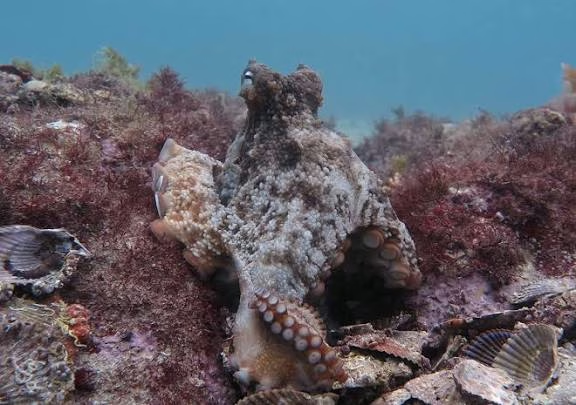
The Discovery
The first whispers of Octlantis came from divers in 2017. Marine biologist David Scheel of Alaska Pacific University, working with colleagues from the University of Sydney and the University of Illinois, returned to a familiar study site near Jervis Bay. They had been observing a small group of octopuses at a place they named Octopolis, discovered a few years earlier. That site already hinted at social behaviour, but what they found nearby — a second, independently formed settlement — confirmed that it was no anomaly.
Here was Octlantis, populated by the gloomy octopus, Octopus tetricus. The team set up cameras, recording hundreds of hours of footage. What they saw astonished them: individuals interacting constantly, engaging in displays, defending dens, and even evicting rivals. They weren’t simply co-existing — they were living in a social structure, however fragile and fleeting.
In the scientific paper that followed, Scheel and his colleagues wrote, “These observations suggest that complex social interactions among octopuses are more common than previously recognized.” In plain terms: octopuses might be far more like us than we ever imagined.
The Architecture of the City
At the heart of Octlantis lies its architecture — if one can call it that. Each den is a small fortress of shells and stones, carefully arranged. The inhabitants have gathered thousands of scallop shells, remnants of their meals, and stacked them into walls and embankments. Over time, these structures have fused into a labyrinthine sprawl. Narrow lanes wind between dens; piles of shells form plazas. It is a settlement born of hunger and ingenuity.
The octopuses are not merely passive occupants — they are builders. With deliberate movements, they use their arms to clear debris, to drag shells, to rearrange stones. They choose vantage points and reinforce entrances. Each decision reveals a quiet intelligence at work. It is, perhaps, the closest thing to urban planning ever seen among invertebrates.
And yet, Octlantis is not a peaceful utopia. Cameras captured disputes as neighbours jostled for space. Individuals stretch their arms, flash warning colours, or shoot jets of water to drive rivals away. Males compete for the attention of females, while intruders are swiftly evicted from prized dens. There are even moments of outright theft — an octopus sneaking into another’s home to snatch a shell or a scrap of food.
Conflict, courtship, and construction — the rhythms of city life echo even here, beneath the waves.
Though it all might be a big internet lie.
A Mirror Beneath the Waves
It is tempting, perhaps irresistibly so, to see in Octlantis a reflection of ourselves. We too began as solitary wanderers, nomads chasing sustenance. In time, necessity and curiosity drew us together, and from that union came cities, culture, civilization. Could the same impulse — the need for proximity, for shared defense or opportunity — be stirring in these cephalopods?
Science urges caution. Octopuses do not form communities out of friendship or culture. Their society is pragmatic, a response to abundance and constraint. Still, within that coincidence of ecology arises something more: behaviour that hints at learning, memory, even personality.
As Attenborough might observe, “Here, intelligence reveals itself not in the making of tools or the writing of language, but in the subtle dance of coexistence.”
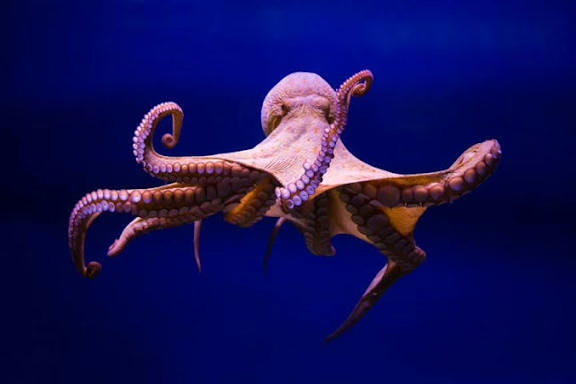
The Intelligence of the Alien Mind
The octopus has long occupied a unique corner in the pantheon of intelligence. With three hearts, blue blood, and neurons distributed throughout its arms, it is as close to an alien consciousness as we are likely to meet on Earth. Roughly two-thirds of an octopus’s neurons are not in its central brain at all, but in its limbs — each arm capable of independent sensation and movement, yet guided by a central will.
Experiments over the past decades have revealed remarkable capabilities: problem-solving, tool use, short- and long-term memory, and even play. In captivity, octopuses have opened jars, dismantled aquarium equipment, and recognized individual humans. One even learned to squirt water at a specific light that annoyed it, apparently out of irritation.
Octlantis adds another layer to this mystery. Social behaviour requires a new level of cognitive sophistication — the ability to interpret, predict, and respond to the actions of others. Watching one octopus signal to another with a sudden flush of colour, or stand tall and spread its arms in dominance, is to witness communication in its rawest form.
The Human Parallel
There is something deeply humbling in this revelation. We, who once believed intelligence to be our own defining gift, now find it blooming in unexpected forms all around us — in dolphins that use names, in crows that make tools, in cuttlefish that deceive with astonishing grace. Octlantis reminds us that the mind is not a human monopoly.
More profoundly, it suggests that cooperation — the foundation of society — may arise wherever conditions demand it. The octopuses of Jervis Bay are not building cities out of culture or art, but out of survival. And yet, in doing so, they’ve stumbled upon the first flicker of something communal, something that mirrors the earliest steps of our own ancestors.
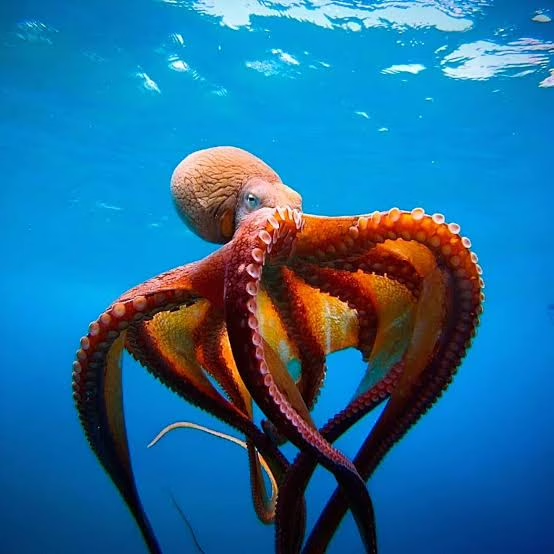
The Fragile Beauty of the Site
When divers first descended upon Octlantis, they described it as a place of eerie beauty. The water there is clear and still, the seabed pale beneath the light. Every few metres, the landscape ripples with shell mounds. Within them, octopuses peer from dark entrances, eyes gleaming with quiet calculation. Occasionally, a curious one emerges, extending an arm to test the intruder’s camera or fin.
But beauty here is fragile. The settlement exists in balance with its surroundings. Too much disturbance — by storm, by predator, by human curiosity — could scatter it like sand. As with many wonders of the wild, observation risks altering the very thing we seek to understand.
Conversations Without Words
To call what happens in Octlantis “conversation” might seem fanciful, yet researchers who have spent hours watching the footage will tell you — there is dialogue here, of a kind. It is a language of colour, posture, and gesture.
When an octopus feels threatened, its skin can flush from ghostly white to deep crimson in a heartbeat. It can ripple with patterns, shifting from camouflage to declaration. Two males facing off may mirror one another’s shapes like duellists bowing before combat. And then, in a moment, they break apart, the victor settling back into his den while the other retreats in a cloud of sand.
This is not random display — it is communication, deliberate and nuanced. In many ways, these octopuses are writing their own visual symphony, played not in sound but in light.
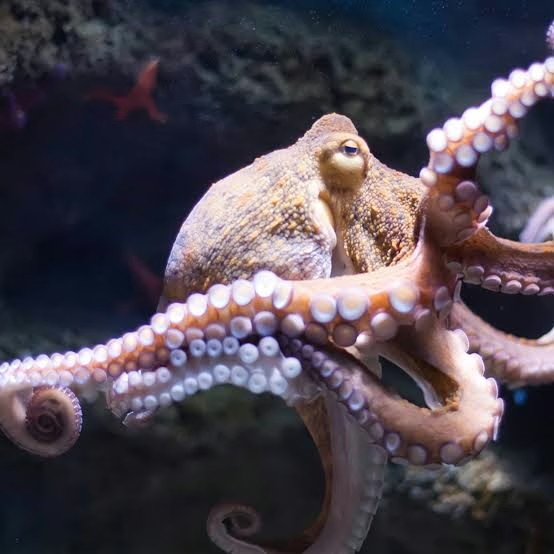
Minds Meeting in Murky Water
It is astonishing enough that these creatures can signal to one another — but even more so that they seem to interpret and remember those interactions. Observers have noted that octopuses recognize individual rivals, adjusting their behaviour depending on who occupies the den next door. There are grudges, alliances, familiar faces in the undersea crowd.
This selective social awareness is remarkable, and it hints at intelligence evolving in ways that do not mimic humans — yet are no less sophisticated.
The Texture of Time in Octlantis
For all their brilliance, the lives of these beings are heartbreakingly short. The gloomy octopus lives barely two years. A single breeding season can mark the end. After mating, the female tends her eggs, refusing food until they hatch. The male, too, fades shortly after.
So Octlantis is a city in constant turnover — a transient civilization, born and reborn with each new generation. Yet the city itself endures, its shell mounds forming a living memory of those who came before.
Evolution’s Whisper
Octlantis is more than a spectacle of behaviour; it is a testament to evolution’s boundless inventiveness. The gloomy octopus has evolved a suite of skills unparalleled among invertebrates. With a brain that rivals many vertebrates in complexity, each arm imbued with a decentralized nervous system, and the ability to change colour and texture in an instant, the octopus is a living experiment in intelligence.
Necessity drives cooperation. Abundance and shelter converge, and what was once solitary becomes social. Through Octlantis, we see the profound truth that intelligence is not a solo act, but a dialogue with the environment and with others.
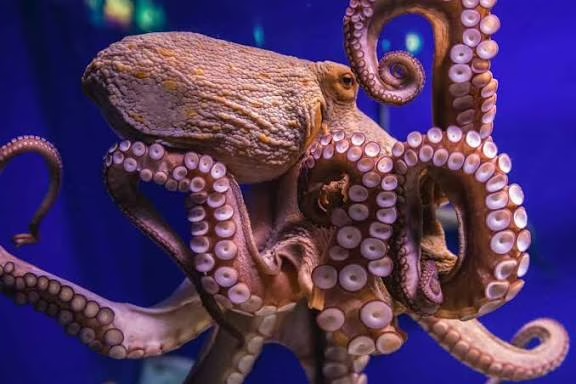
Lessons in Resilience and Ingenuity
The octopuses of Octlantis have survived in a world that is at once beautiful and unforgiving. Storms can sweep away dens, predators lurk, and humans hover above, curious yet oblivious. Yet, the city endures. Each generation rebuilds, learning from the shells left behind by the last, adapting and refining. It is a portrait of resilience — a lesson for all creatures, including ourselves.
A Symphony of the Hidden
Scientists estimate that more than eighty percent of the ocean remains unexplored. Within that darkness, creatures we have yet to meet build, hunt, communicate, and survive. For every Octlantis discovered, countless other ecosystems thrive, invisible yet vital, humming with life beyond our imagination.
Reflections on Wonder
It is impossible to encounter Octlantis without a sense of awe. Here is a city without architects, yet orderly; a community without language, yet expressive; a civilization without permanence, yet rich in learning. Each octopus carries the legacy of countless generations, shaped by solitude, by necessity, and now, by fleeting social interaction.
“They remind us that life’s greatest marvels are not only those that mirror our own, but those that show us what else is possible.”
The Call to Protect
Octlantis is fragile. Climate change, habitat destruction, pollution, and human interference all threaten its existence. Marine reserves, sustainable practices, and remote observation are essential. Every protective measure is a gesture of respect for life that has persisted for eons.
Closing the Circle
As the sun dips below the horizon and the sea darkens to its eternal indigo, Octlantis continues its quiet rhythm. Tentacles stretch, colours flash, shells shift — the city breathes. Each movement is a testament to survival, intelligence, and the astonishing diversity of life.
In the end, Octlantis is more than a discovery. It is a reminder — a luminous, flickering signal from the depths — that the world still holds secrets, that life is endlessly inventive, and that our capacity for wonder is as vital as our capacity for understanding.
Remember Octlantis. Beneath the surface, somewhere in the blue, there is a city alive with colour, intelligence, and mystery. A city built not by architects, not by governments, but by creatures whose lives remind us that even in solitude, connection is possible, and even in the quiet, the extraordinary awaits.

Very nice contact !
keep going sir